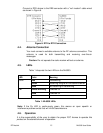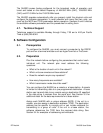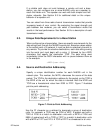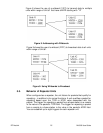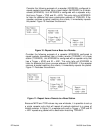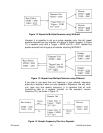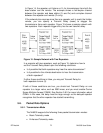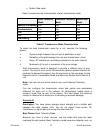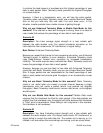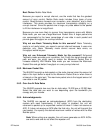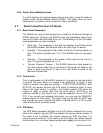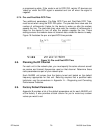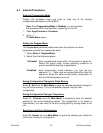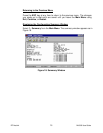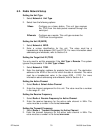
RF Neulink
NL6000 User Guide
23
it contains the least amount of overhead and the highest percentage of user
data in each packet. Basic Telemetry mode provides the highest throughput
on a clean channel.
However, if there is a transmission error, you will lose the entire packet.
Therefore, when using Basic Telemetry mode, use a smaller Maximum Packet
Size so that you lose very little user data if an error does occur. In this
situation, smaller packets have a better chance of getting through.
Why not use Enhanced Telemetry Mode or Mobile Data Mode for this
scenario?
If the channel is clean and the signal is strong, there is no need to
use a mode that reduces the percentage of user data in each packet.
Scenario #2
Description:
You have average signal strength or a less reliable path
between the radio modem units. You expect occasional corruption on the
radio data link from noise bursts, RF interference, or signal fading.
Best Choice:
Enhanced Telemetry Mode
Because you expect the channel to have occasional corruption, use Enhanced
Telemetry mode. In addition to error detection, Enhanced Telemetry mode
uses Reed-Solomon forward error correction for increased transmission
reliability. This mode requires more overhead than Basic Telemetry mode and
lowers the percentage of user data in each packet.
However, because you are less likely to lose data with Enhanced Telemetry
mode than with Basic Telemetry mode, you can use a larger Maximum Packet
Size. A larger packet size can compensate for the lower percentage of user
data in each packet and provide good throughput on an occasionally corrupt
channel.
Why not use Basic Telemetry Mode for this scenario?
Basic Telemetry
mode is not useful when you expect a corrupt channel because a single
transmission error will cause a packet failure. Lost packets will degrade
throughput. Basic Telemetry mode cannot recover data errors, so throughput
would be poor.
Why not use Mobile Data Mode for this scenario?
Mobile Data mode
requires that the interleaver be filled for each packet. If the data packets are
smaller than the interleaver size, throughput will suffer because the interleaver
is filled prior to transmission. Since fading is not a big issue in this scenario,
the interleaver is not necessary.
Scenario #3
Description:
You have fluctuating signal strength and a less reliable path
between the radio modem units. You expect noise bursts, RF interference, or
signal fading to corrupt the radio data link. The remote unit is moving, or it is
located in an area where the surroundings are moving, such as a busy street.



